Story and most pictures by Raoul Pascual
Iligan City is one of the 10 largest cities in the Philippines. Its history goes back to the Pre-Spanish colonial era. With 300 years under Spain, it is no wonder that the majority of the population is Roman Catholic.
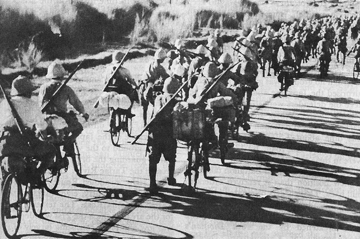
Because of its central location, the city was invaded by the Japanese forces in 1942. I remember my grandmother’s story about the war. My great grandfather had all the women in the family gathered in the living room and he had drawn out his bolo (a hacking sword). The Japanese had a reputation of torture and rape and my great grandfather was ready to slaughter his own children first rather than give them up to the Japanese. Fortunately, the house was bypassed and they all lived to face another day.
There was another story of the town folk who gathered inside the church praying because the Japanese were going to bomb the city. They heard the planes roaring above them but nothing happened. No bombs were dropped. Years later one of the Japanese pilots remembered that day. He said their maps indicated they were above the city but they could not see any buildings. Was it a miracle? What do you think?
Iligan of my youth
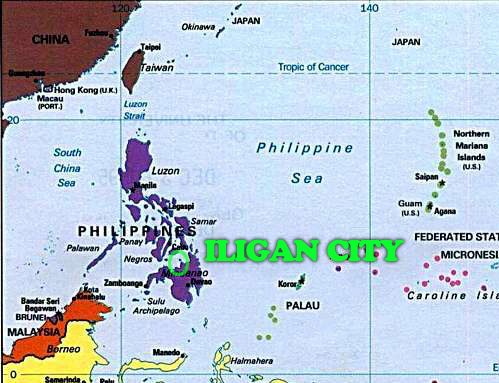
Iligan is known for many things but for me, this is the home of my ancestors. My family would escape the metropolitan city of Greater Manila (where we lived in my youth) and spend our summer vacations here. I remember taking two day journeys by boat from Manila in the north and Iligan in the south. Half of the boat was cargo and the other half were passengers. We would rent a sardine cabin and, if not available, we would sleep barrack-style in cots on the second deck and watch the waves and the flying fishes and dolphins swim alongside. Usually we would get in the boat by mid-afternoon but the cargo would take forever to load and in the midst of the clamor of the stevedores/longshoremen and the noisy cranes, we would fall asleep. In the morning we would wake up to the deafening hum of the ship’s diesel engine in the middle of the Sibuyan Sea.
In my grandmother’s town, I remember swimming with the colorful marine life that danced in the crystal clear water and playing with the hermit crabs in the pristine black sandy beaches. Population was still sparse and gravel pathways to the different houses were clean and orderly — most probably patterned after the orderly American bases. Usually we would walk around the neighborhood wearing our rubber sandals but sometimes we would get a lift from the carabao (water buffalo) drawn sleds. Those days are gone. Alas, man had set in. There are other parts of the Philippines where nature is relatively untainted by modernity but not here in Iligan.
Getting there
Nowadays, it is much easier to travel by air. You have a choice of 2 airlines: Philippine Airlines and Cebu Pacific. I prefer Cebu Pacific. The fare from the Manila domestic airport to the Laguindingan Airport (the closest airport to Iligan) is about $50 for a 1.5 hour trip. Only one baggage (max. 44-60 lbs.) and one carry-on are allowed — otherwise you pay extra. Check the Cebu Pacific Airlines website for more details.
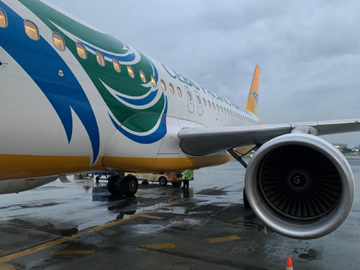
Face masks were encouraged but not mandatory. Delays are common and usually pile up at the end of the day. Often it is due to bad weather. The turbulence isn’t too bad up in the air but the pilot circles around in a holding pattern until he sees an opening in the clouds making it safe to land.
From the airport it’s a long two hour drive to Iligan City if you travel by private vehicle. Four hours if you travel by bus. And if you do travel by bus, you need to have your ID and Covid health card ready or you can’t board the bus.
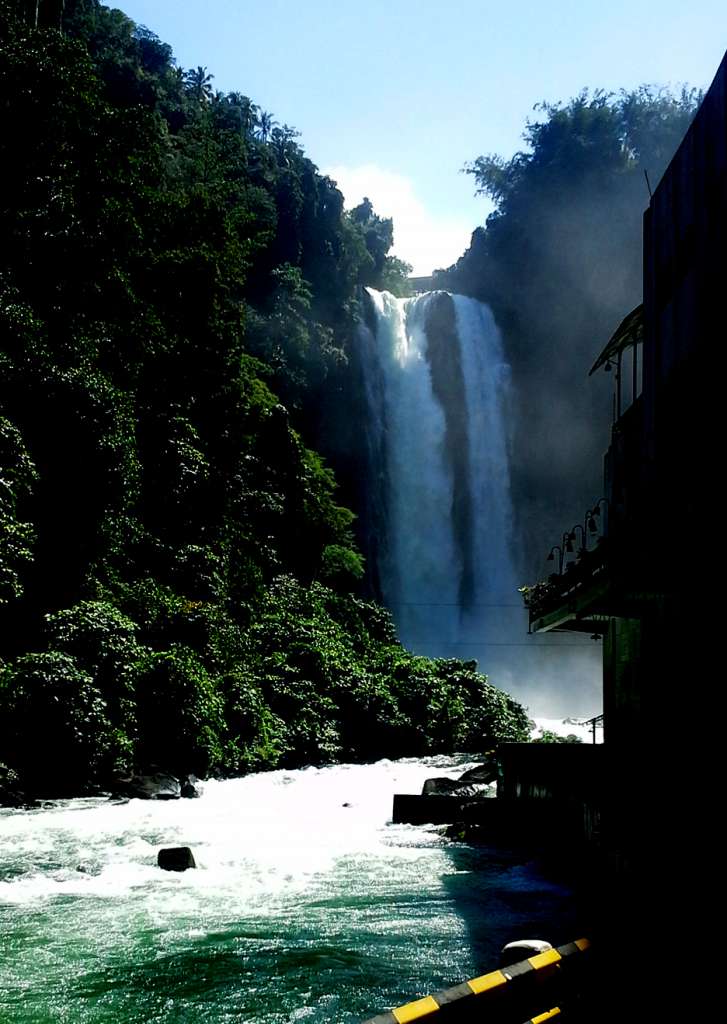
It is highly urbanized. In fact, there are 181 schools and 5 hospitals. Most of the year, there are rain drizzles. It can be muggy and hot in the morning and wet with heavy rainfall and lightning in the afternoon. The sun is up by six am and sunset comes at 7pm. Traveling through the countryside, I couldn’t help but notice so many shirtless men sitting outside their homes watching traffic whiz past while the women were sweeping the dust away and doing other housework. I guess the home is an Iligano male’s castle.
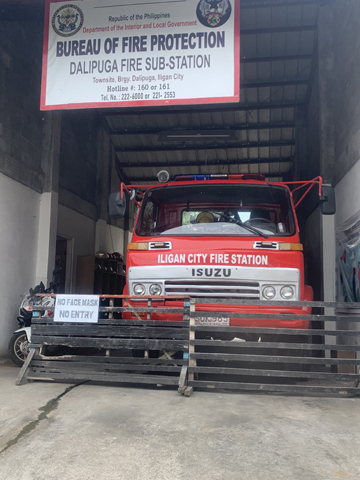
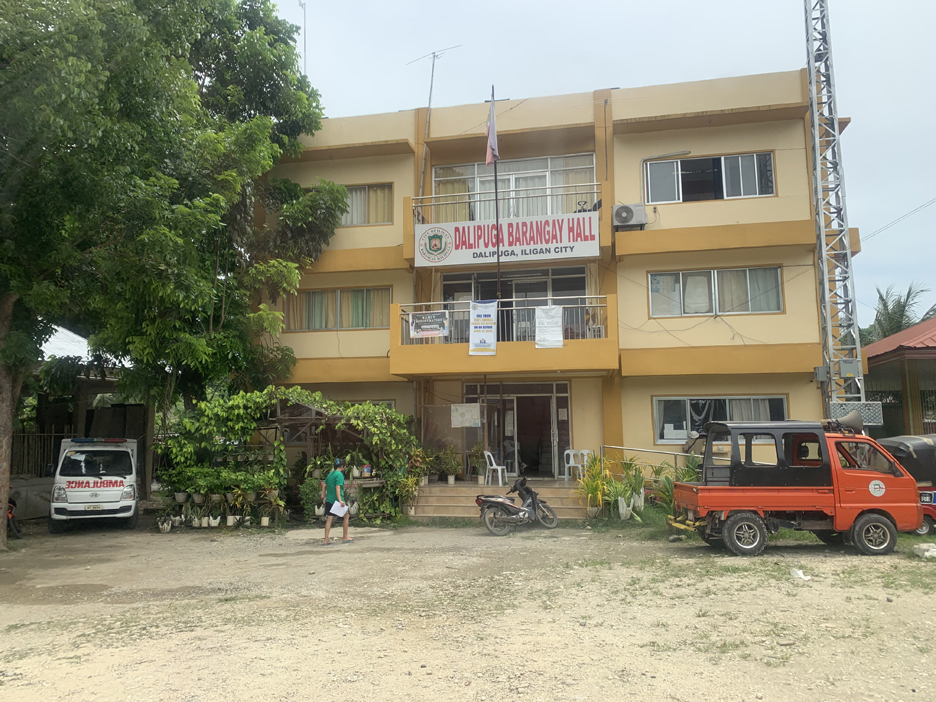
The language
Cebuano is the language of Southern Philippines and is the common talk of the Iliganos. Tagalog (the national language of the Philippines) and English are used to teach in some of the classrooms. To my surprise, a few of the local middle class even prefer conversing in English than Tagalog. They probably watch too many Hollywood movies. Many Filipinos have a colonial mentality. In other words, they are starry eyed by everything American — movies, the NBA (basketball is the favorite sport of the masses … tennis and golf for the super elite) and music. In fact, if you have western features, you can be a movie star … no talent required.
I had some of the local kids introduce themselves and then sing a song in Tagalog. I think the song is about unrequited love.
The People
Most Iliganos are fun-loving brown skinned because of their exposure to the sun. They have a mix of Malay and Chinese features although some mestizos (children of mixed marriages) can be spotted (mostly from the Spanish lineage). Most are slender and muscular but there are also those who are heavy set (due to large consumption of rice). The average height I would say is 5 feet and two inches.
Catholics comprise most of the population in Iligan but there has been an influx of Muslim refugees who escaped the war in nearby Marawi City on May, 2017 between the government forces and the local branch of ISIS. You can tell who the Muslims are by the veil coverings on their heads.
The Muslims are called Moros and they are a proud race. They have a history of war in their blood — you don’t want to mess with them because they are known to seek revenge. For the most part, both religions get along well. Many of the imported goods are sold by the Moros who import from nearby Borneo of Malaysia in the south whose population is predominantly Muslim. They are very enterprising.
Food glorious food
Almost everywhere you turn there is a carinderia (a small canteen). You find them in the mall in fast food chains like Jollibee, Inasal and Chow King that serve hamburgers, fried chicken and noodles. I was surprised not to see any McDonalds franchise … I think the local competition with their local flavors drove them out of town. You can also find food along the major and minor streets. Rice is more common than bread. Local bread doesn’t taste as good as US bread. I think it has something to do with the flour and the water.
Speaking of water. DO NOT drink tap water. Any water you put in your mouth should be bottled water. That includes water to brush your teeth and gargle. Tap water is for washing your hands and taking a bath. Water is plentiful since Iligan is near the beach and is near several water falls. Water mostly come from deep wells. I think each establishment and home pump their own water. Many poorer communities pump water by hand.
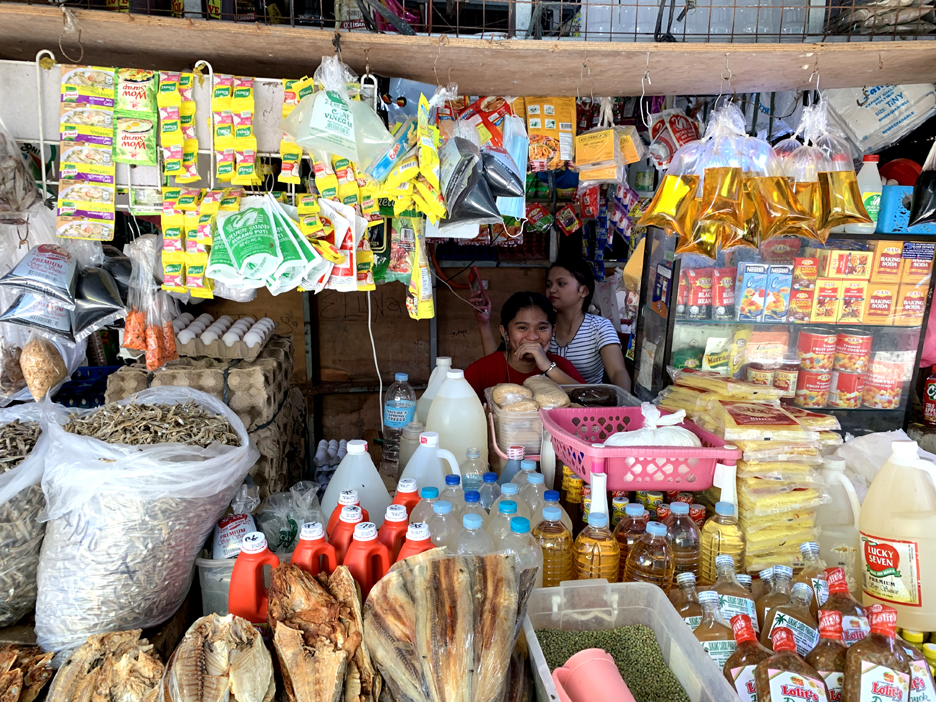
The pace of life can be very slow. As long as you have a roof over your head you can live off the fat of the land and sea. Iligan Bay is rich with creatures of the salty sea. If you’re into sashimi, you’ll love it here. A regular sized Tuna of about 2 feet length costs a mere $7 a kilo. (BTW, the Philippine uses the metric system in most instances). Usually, you can select the part of the fish you want for the same price. The locals don’t appreciate this Japanese delicacy because they don’t understand the fascination for wasabi. Iliganos don’t really like spicy hot food. The favorite fish preparation of the locals is “daing” (pronounced “Da – Eeng”) which is essentially fried salted dried fish dipped in cane vinegar. Chicken is mass produced and inexpensive. Tell the butcher how you intend to prepare the meat and they will gladly slice it to your liking. Fresh milk is very rare. Not too many cows here.

A variety of tropical vegetable make interesting soup concoctions. They have eggplant, string beans, Chinese spinach, petchay (a local bok choy), squash, sweet potato and tomato. Champagne mango is cheap here at $4 a kilo. Spices like garlic, ginger, onion, pepper, fish sauce, soy sauce and calamansi are common. Coconut is also plentiful and they turn it into vinegar, wine, milk, ice cream, toppings for bibinka (a local steamed pastry) and candy. My favorite is simply partially frozen fresh pure coconut juice.
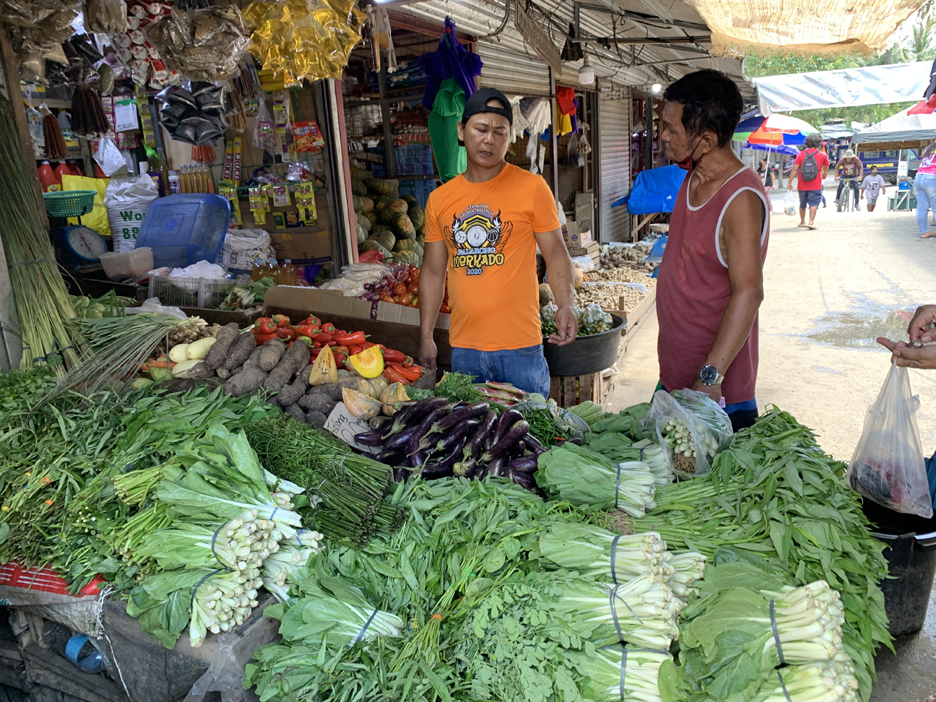
Iligan boasts of its own unique flavorful concoctions such as Pinakurat (a unique vinegar with lots of special spices), Piyaya de Iligan (some sort of pancake filled with ube, chocolate, peanuts, durian, cheese and other different flavors). Palapa (an asian cuisine made of onions, shutts and hot spices).
There are some fruits that look alike outside but are completely different like jackfruit and durian. Another set of similar fruits are makopa, marang and tambis that come in shades of pink, white to green. There are star apples and star fruit (balimbing). Santol and mangosteen are strange fruits whose inner skin remind me of pears but whose seeds (the sweet part) look like cotton balls. There are cherry-looking fruits that are called aratilis. Atis is a fruit that looks like a soft dark green grenade … open it up and you see several black seeds covered with white sweet flesh.
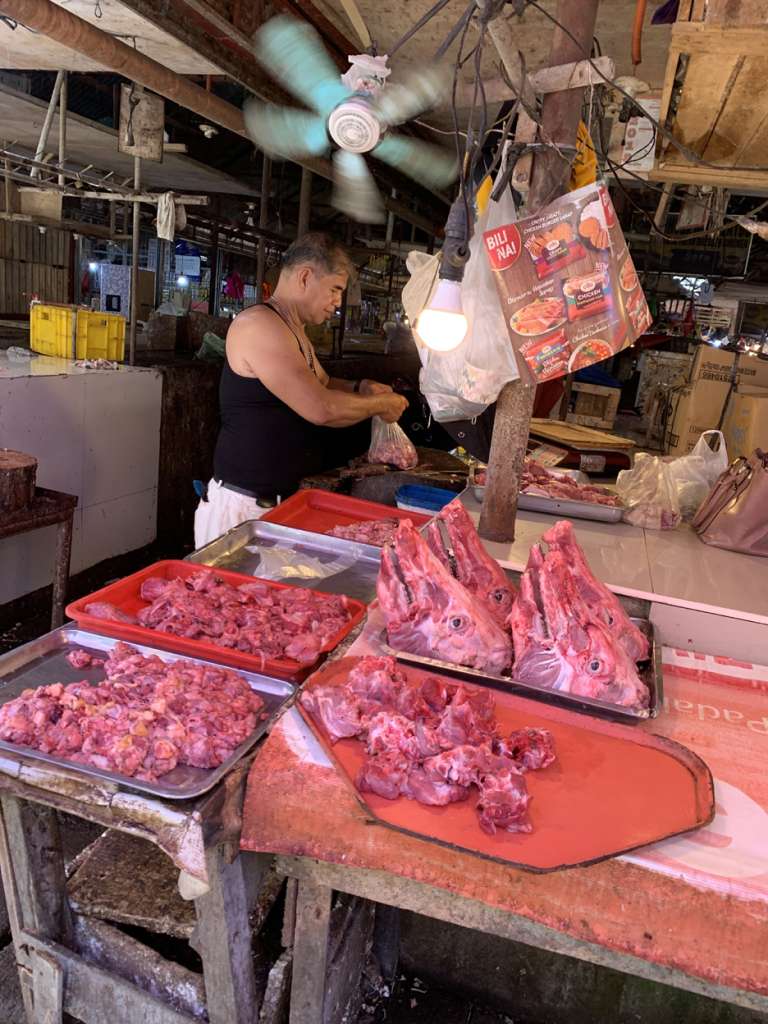
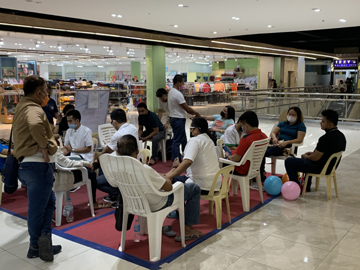
Energy
Most kitchens (residential and commercial) use gas tanks. Transporting full tanks and exchanging empty tanks is an age old practice. There are no cooking gas lines here like they have in the U.S.
Electricity is constant since one of the main sources of electricity comes from the Maria Christina Falls. Especially during the rainy season, this powerful waterfall supplies hydroelectricity to other parts of the country. The only reason why there might be an occasional shutdown would be due to supply preference to industrial factories.
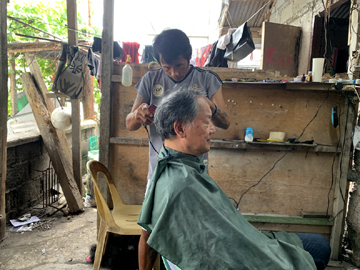
Wish I could say the same about the internet. The service is sporadic and, even if you had fiber optics installed, the most you can get is 75 MB … usually it hovers around half of that. Blame it on the monopoly of PLDT (the Philippine Long Distance Company) for land lines and internet feeds. It costs $26 per month. With cell phones, there are several satellite providers to choose from that allow you to use your cell phone on the go – Globe, Smart, TM and Dito. A few years ago, carriers used to sell data- minutes but with so many competing players it has been simplified to $2 a week for unlimited usage. To be honest, I still don’t know how to call a local number. There are area codes, international codes and local numbers that you need to juggle around to get the working combination. I gave up! I let the locals dial the number for me but even they don’t get it right.
Tourist Attractions
Iligan boasts of 23 waterfalls, 8 springs and 15 caves. Iligan is known as the City of Majestic Waterfalls. Some of them are the Maria Christina Falls, Tinago Falls, Poldo Falls, Dodiongan Falls, Limunsudan Falls, Mimbalot Falls, Kalubihon Falls, Dalipga Falls, Kamadahan Falls, Hindang Falls, Abaga Falls and many more. It has also has a lot of caves. If you want to go to any of these, you better put on your hiking boots.
Driving
It’s fascinating to watch how people drive. It’s a thrill of amusement park proportion. Most of the roads have at least 2 lanes on each side. Like America, the driving wheel is on the left side and traffic flows from the right side. But unlike the US, the inside lane is not the overtaking side. It is the outer lane at the edge of the road where you overtake. Why? Because the outside lane is where uncertainty lies. Driving on the left side and a car length away from the car in front, you can’t see what’s on the outside lane — if a vehicle is stalled there or a shanty is built there or the road suddenly ends. Frustratingly, slow moving vehicles like tricycles or scooters or heavy trucks refuse to drive on the outer lane because it would be harder for them to return to the fast lane if the road is blocked. I think there’s also this feeling of superiority … as if they’re saying “nya! nya! I may be slow but I’m still in front of you!”
People drive defensively and communicate with their horns. Two quick horns warn the other driver that you are coming through. One quick horn says “I heard you.” One long horn is the internationally accepted shout to the other driver: “Bastard, get off the road!”
Iligan is a simple, typical Philippine city full of warm, friendly laid back English-speaking Filipinos. The standard of living is very affordable. It’s a relatively poor community judging from Western standards. It’s not the cleanest city for sure. Its economic potential has not yet peaked. Natural resources and a trained labor force are waiting for opportunities. As in my youth, it’s still a great place to escape from the stress of life.























